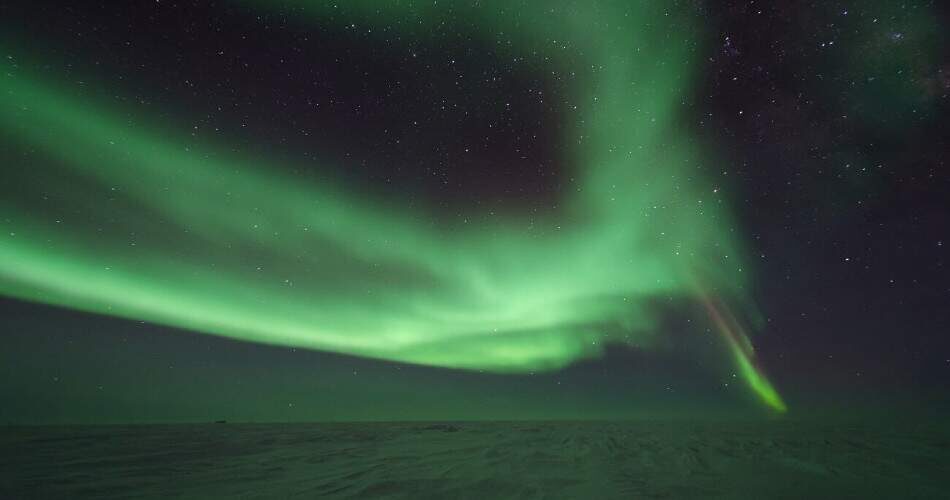Estimated reading time: 1 minute
In the southern hemisphere it is known as the “aurora australis” (southern lights) and in the northern hemisphere as “aurora borealis” (northern lights). So from this side of the world, in the Argentine Antarctic you can enjoy the show that Mother Nature offers, in its aurora australis version. In Argentina it is also known with the romantic and poetic nickname of ”southern lights” (“luces del sur”).
The Auroras, australis or borealis, appear at high altitudes, between 100 and 1000 kilometers above sea level.
Aurora Australis happens when cosmic radiation (commonly charged solar particles) collides with the Earth’s magnetosphere.
When the radiation hits this invisible protective layer, it travels along the invisible lines of magnetism that surround the planet.
This energy is accumulated until it reaches a limit capacity, and it is at that moment that (with the right climatic conditions and in the hemisphere where it is at night at that moment) the energy shoots up into the ionosphere, creating the colorful lights which we can enjoy.
Where to see Aurora Australis in Argentina?
In the south of the country, in Ushuaia, the southernmost city in the world, you can enjoy the Aurora Australis. Ushuaia is very close to the Antarctic Circle and that is why it is a privileged place for Aurora Australis to occur. These dancing lights can go hand in hand with an expedition to the white continent, that is, to Antarctica.
If you want to find out about the South Pole, check out our article on this topic: 18 interesting facts about the South Pole.
[Photo from Unsplash]
